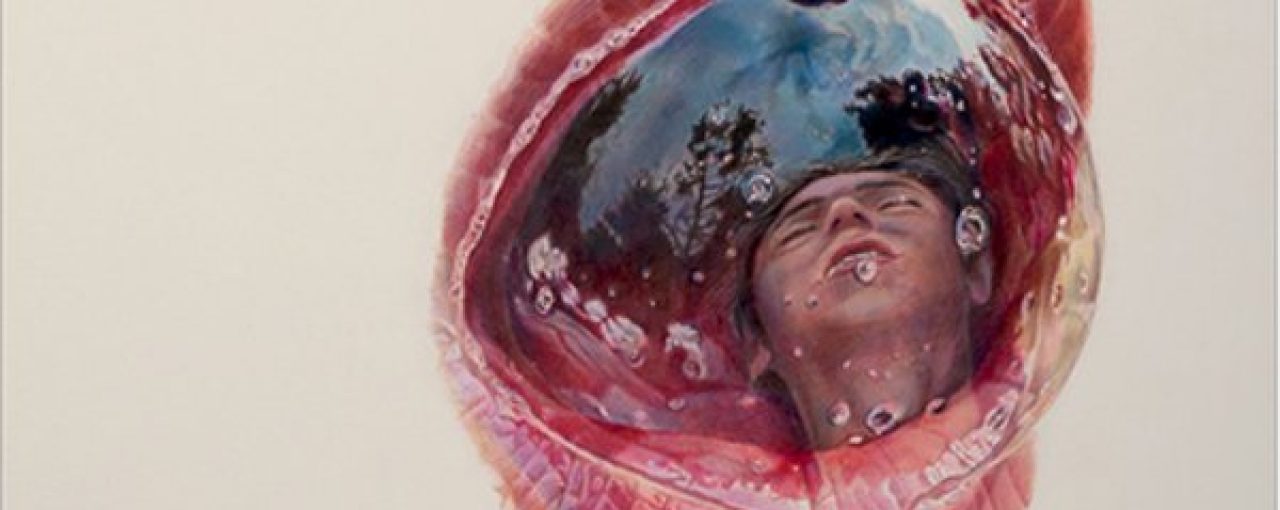“My drawing method has to be so finely honed
that it ultimately disappears…”
Interview by Jennifer Nelson, WTP Feature Writer
Julia Randall’s drawings have been exhibited both nationally and internationally, and she is the recipient of fellowships and residency awards from the New York Foundation for the Arts, Yaddo, and the Cité Internationale des Arts in Paris. She earned her MFA from Rutgers University, and her BFA from Washington University in St. Louis. Her work has been reviewed in The New York Times, and her drawings have been featured in New American Paintings, American Artist and Beautiful/Decay magazines.
Nelson: On your site, you talk about how you are in love with your drawing. What is it about this medium that so appeals to you? And have you worked in any other mediums?
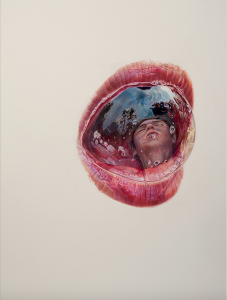
Randall: Drawing has been my central preoccupation since I was very young, perhaps twelve or thirteen. It is the intimacy and directness of drawing that appeals to me. I teach drawing, and I often refer to it as the most “naked” of media—the touch of the individual maker is revealed, the process and materials are uncovered and on display.
Nelson: In your series Under and Afloat, your drawings are so realistic they resemble photographs. Can you talk a bit about your process—one that seems intensive and requiring of great patience?
Randall: I draw using a precise, scientific method as a way to describe what we ultimately cannot see or hold; it is my ritualized effort to prevent the loss of all things that are ultimately fugitive. My process is unusually labor-intensive and requires willingness to delay gratification; the image must be rendered in persuasive, exacting detail. I often hear comments about how “realistic” my drawings are, when in fact, I draw using more detail than the eye will normally perceive. Lethally sharp pencils, a jeweler’s head loupe, and many delicate layers of colored pencil yield three-dimensional illusionism. It is the persuasiveness of this visual language that creates visceral, surreal tension in my work.
My drawing method has to be so finely honed that it ultimately disappears, leaving a viewer to focus on the image and meaning, rather than marks. Photography serves as source material, but I do not directly copy photographs. I take many photos to “teach” myself how light plays across surfaces, about reflections and volumes.
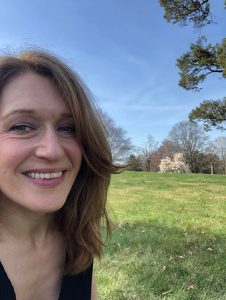
Nelson: Your work is captivating: at once exquisite and grotesque. It’s a fascinating and compelling dichotomy. How did your work evolve to this place where you are pushing boundaries it seems, between the real and the imagined?
Randall: Our corporeal experience is both exquisite and grotesque. The body, its pleasures, discomforts, and ephemerality, are the real content of my work. Although I often operate in the realm of fantasy, I use observation-based drawing and hyperrealist technique to suspend disbelief, and to create images that are sensual, surreal, and provocative. I use metaphor in my work to suggest the multilayered experience of living in a body. The richness and detail of the drawings serve as a lure to beckon a viewer to come closer. This beauty unfolds into imagery that is discomforting, and that challenges us to occupy the queasy intersection of attraction and repulsion.
Nelson: Your drawings in the Contraptions series resemble artwork from the surrealism and Dada movements in the early twentieth century. You irrationally juxtapose images such as a tongue on a powder compact, which lends a fantastical, erotic quality to the piece. How have you been inspired by artists from this period?
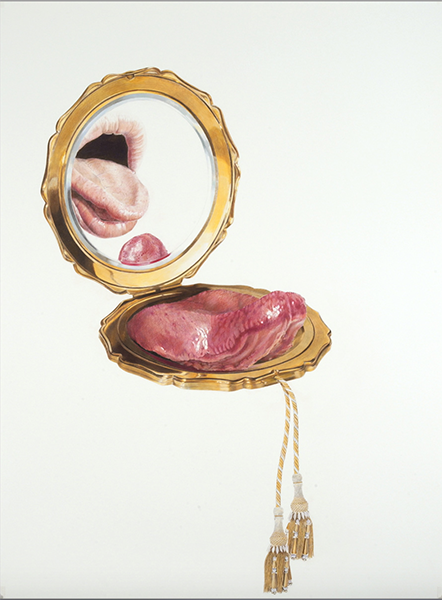
Randall: Yes, absolutely. I took my cues from Dada inventions, and engravings from Diderot’s Encyclopedia, to then obsessively draw imaginary hybrid apparatuses designed for self-gratification. Fantastical items inspired by French Empire fashion and decorative objects are playfully cobbled together with mouths and tongues, and allow us to wonder if these surreal objects could possibly exist.
My hybrid Contraptions tweak the relationship between objects and desire, and humorously challenge what is “natural” and “synthetic” about desire and eroticism.
Nelson: The subject of Blown is an unusual one—bubble gum. And several of these drawings are featured in this month’s WTP. How did you come to this as a subject for a series?[gap height=”10″]
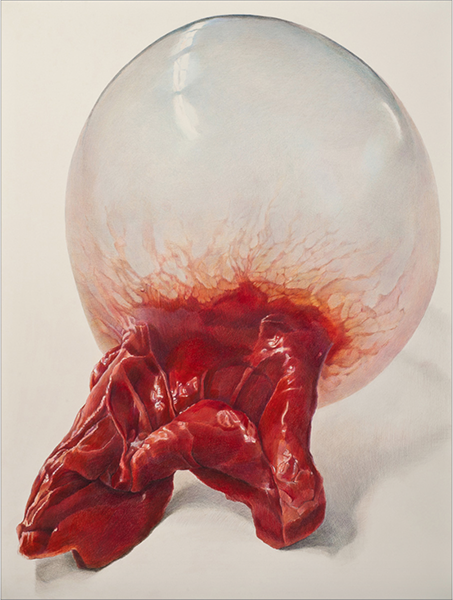
Randall: Previously, I had been drawing images of the saliva bubble. I was compelled by the fragile liquid membrane, which both separates and unites the interior and exterior spaces of the body. I wanted to explore other bubble imagery: chewing gum blown into bubbles, in various states of inflation and deflation. The fragile skin of gum points to the susceptible human body, and the dreaded passage of time. The bubble is a vessel that holds our breath, for a brief moment, in a physical form. Seen as a group, the inflating/deflating bubble imagery is a physical manifestation of breathing.
Nelson: How do you see your artwork evolving in the future?
Randall: For the first time ever, I have begun working three-dimensionally, using Sculpey modeling clay. I am creating set-ups that recall the structures in eighteenth-century vanitas still-life painting. Initially, I started creating sculpture simply with the intention of drawing them from observation, as models. However, the 3-D part of the process developed a life of its own. I find this manner of working to be wonderfully direct. I am not creating “illusion,” and the evidence of my hand in the crafting enriches the content. Sculpey is also quite sensitive, and allows me to work with same detail as I do when I draw.
Copyright 2018 Woven Tale Press LLC. All Rights Reserved.

